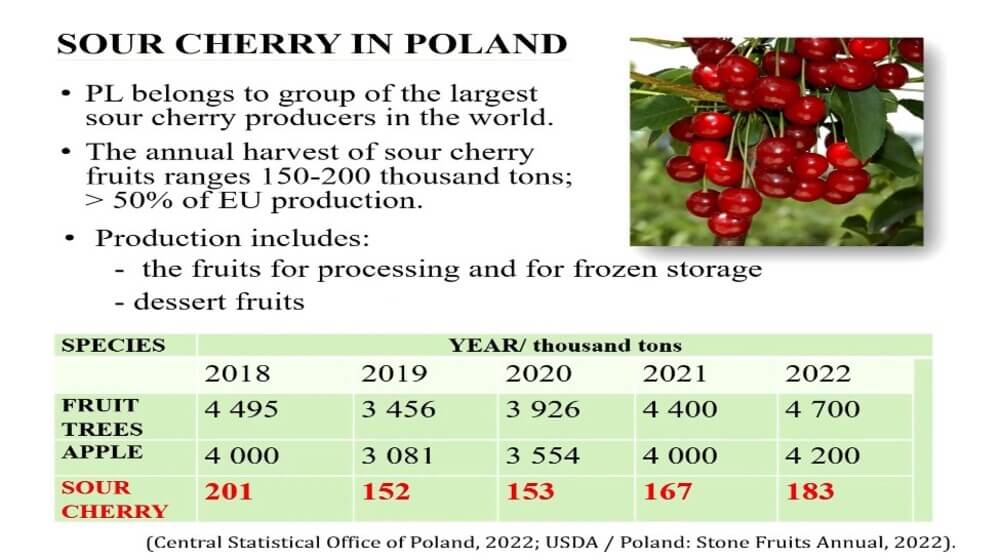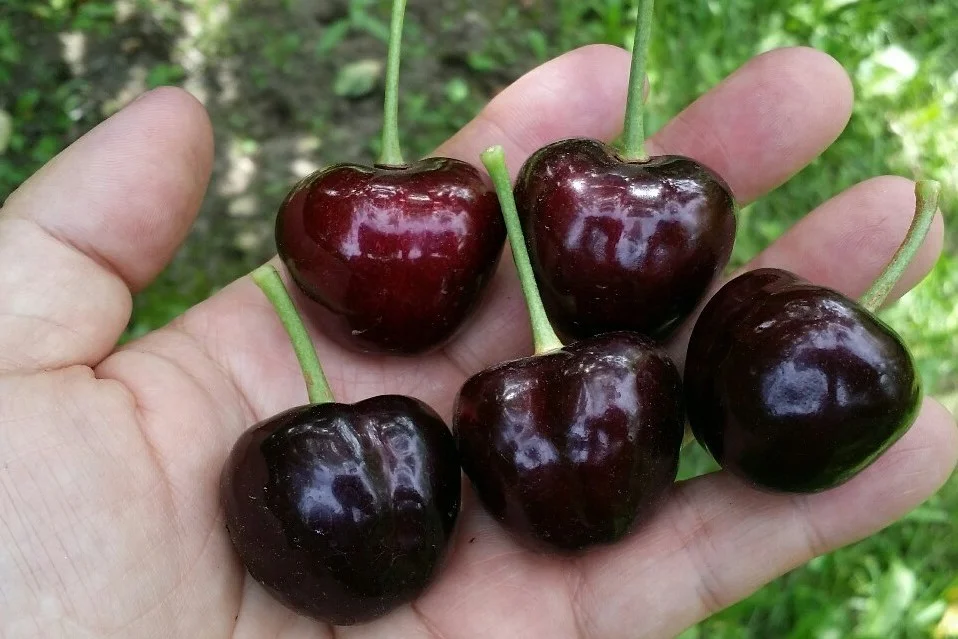An important challenge encountered in the cultivation of sour cherries in Poland is the detrimental impact of spring frosts on the flowers and flower blossoms. Additionally, certain diseases, including brown rot (Monilia spp.), cherry leaf spot (caused by Blumeriella jaapi), and bacterial cancer (Pseudomonas syringae), have a substantial impact on both the fruit's yield and quality.
Considering the issues associated with a shortage of fieldworkers, particularly during harvest season, the necessity to adjust to these numerous challenges becomes evident. This is most effectively accomplished by a beeding programme and a selection of new cultivars with features adapted to those required.
Firstly, it is essential a high acclimatation ability to the polish environmental conditions; this also entails a lower vulnerability to the main sour cherry diseases. Secondly, plants need to be adapted to mechanical harvesting and intensive cultivation systems. Finally, the introduction of new cultivars should prolong the harvesting season.
To date, the production of cultivated cherries is relatively conservative, as the highly productive and spring frost resistant Schattenmorelle accounts for more than 75% of the total production. The Agricultural University in Lublin developed cv. Nefris in 1997, while the Agricultural University in Poznan produced Agat, Ametyst, Dradem, and Diament as a result of the breeding programme implemented in Poland.
Among the cultivars produced by the Institute of Horticultural and Breeding were Wilen, Wilga, Lucyna, Wanda, Koral, and Kolia. These new selections demonstrate the commitment of Polish research institutes to new solutions that can guarantee quality sour cherry production, even in challenging scenarios such as the one we are currently facing.

Fonte: http://2021.cherries.org.cn/replayEn.html
Melissa Venturi
University of Bologna (IT)
Cherry Times - All rights reserved












